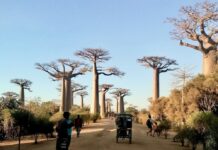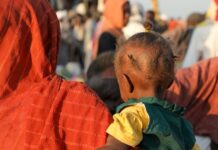
Mais de 800 mil crianças do leste da República Democrática do Congo tiveram de deixar seus lares devido a confrontos armados. O número foi divulgado nesta semana (25) pelo Fundo das Nações Unidas para a Infância (UNICEF), que descreveu a situação como “uma das piores crises de deslocamento forçado do mundo” para meninos e meninas. Agência da ONU e parceiros já identificaram mais de 800 casos de abuso sexual contra menores.
Nas províncias de Tanganyika e Kivu do Sul, a violência entre etnias distintas, somada aos conflitos entre o exército nacional e milícias, já deixou cerca de 1,3 milhão de pessoas em situação de deslocamento forçado. Dados recentes coletados pelo UNICEF revelam que, ao longo do ano passado, mais de 3 mil crianças foram recrutadas como soldados por grupos armados.
Também em 2017, os dois departamentos registraram cerca de 18 mil ocorrências suspeitas de cólera — o dobro do identificado em 2016 — e 18 mil casos de sarampo. Nos províncias, muitos centros de saúde deixaram de funcionar.
“Centenas de milhares de crianças na região não têm mais acesso a cuidados médicos ou educação. Outras sofreram atrocidades nas mãos dos combatentes”, afirmou o diretor interino do UNICEF no país, Tajudeen Oyewale.
A violência também impediu que congoleses do leste do país trabalhassem em suas plantações — o que agrava o risco de má nutrição entre milhares de meninos e meninas.








